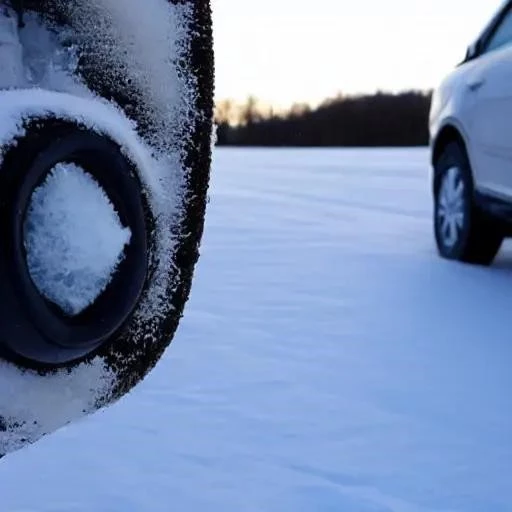The bitter embrace of winter often brings with it a symphony of seasonal challenges, from icy roads to frosty windshields. Yet, few frustrations compare to the sheer helplessness of confronting a frozen car door on a frigid morning. That stubborn, unyielding barrier can transform a simple commute into a monumental struggle, leaving you shivering and utterly exasperated. It’s a common winter woe, experienced by countless drivers across snowy landscapes, but it doesn’t have to dictate your day’s beginning.
Imagine the scene: you’re already running late, keys in hand, only to find your vehicle’s entrance sealed shut by an invisible, formidable force of ice. The gentle tug becomes a desperate yank, followed by the dawning realization that brute force is not the answer. Fortunately, escaping this frosty predicament is not only possible but remarkably straightforward with the right knowledge and a few clever techniques. By integrating insights from seasoned mechanics and winter driving experts, we can transform this common headache into a manageable, even preventable, minor inconvenience. This guide will empower you, offering a forward-looking approach to ensure you’re never again left out in the cold.
| Category | Essential Information / Tool | Description / Usage Tip | Reference / Link |
|---|---|---|---|
| Immediate Solutions | De-icer Spray (Alcohol-based) | Apply sparingly to door seams and lock mechanisms. Avoid direct spraying onto painted surfaces if possible, or wipe promptly. | Consumer Reports ౼ Winter Car Prep |
| Mechanical Approach | Rubber Mallet / Palm of Hand | Gently tap around the door frame and edges to break ice adhesion. Focus on the rubber seals. | AAA ‒ Winter Car Maintenance |
| Preventative Measures | Silicone Spray Lubricant | Apply to all rubber door seals regularly before winter. This creates a protective barrier against moisture and freezing. | Popular Mechanics ౼ Winter Car Prep |
| Emergency Kit Item | Small Plastic Scraper / Credit Card | Useful for carefully prying away thin ice layers from door edges or around keyholes. | The Weather Channel ‒ Winter Driving Tips |
Gentle Persuasion and Lubrication: Breaking the Ice Bond
When faced with a stubborn frozen car door, the initial impulse might be to tug harder, but this often exacerbates the problem, potentially damaging delicate rubber seals. Instead, embrace a strategy of gentle persuasion. Begin by firmly pressing your body weight against the door, then pulling it outwards. This subtle rocking motion can often break the fragile ice bond without causing harm. For particularly obstinate seals, a silicone-based lubricant, applied directly to the rubber gasket, can work wonders. This specialized product forms a protective barrier, preventing moisture from adhering and freezing, thereby ensuring smoother operation even in sub-zero temperatures. It’s a remarkably effective, proactive measure that minimizes future headaches.
The Power of De-Icers: Swift Chemical Solutions
Modern chemistry offers incredibly effective solutions for immediate relief. Keeping a can of commercial de-icer spray in your household (never inside the car if you can’t get in!) is an invaluable asset. These sprays, typically alcohol-based, rapidly melt ice upon contact. Direct a targeted spray along the door’s entire perimeter, focusing particularly on the rubber seals and around the door handle and lock mechanism. While remarkably efficient, ensure you’re using a product safe for automotive finishes, carefully wiping away any excess after the ice has relented. This method provides a swift, clean resolution, returning you to the warmth of your car in mere moments.
Warm Water: A Cautious Approach to Melting Troubles
Though often debated, warm water can be a viable, albeit carefully applied, solution. It’s crucial to emphasize that hot or boiling water should be strictly avoided, as the rapid temperature change can crack glass or damage paintwork, leading to costly repairs. Instead, use lukewarm water poured slowly and deliberately along the door seams, paying close attention to the areas where the door meets the frame. Immediately after applying the water and opening the door, thoroughly dry the seals and surrounding areas with a towel. This prevents the melted water from refreezing, trapping you in a new, equally frustrating cycle. This method, while effective, demands prudence and immediate follow-up to be truly successful.
Embracing Prevention: The Ultimate Strategy for a Frost-Free Future
Ultimately, the most empowering solution lies in proactive prevention. By integrating a few simple steps into your winter car care routine, you can significantly reduce the likelihood of encountering a frozen car door. Regularly cleaning and lubricating your car’s rubber door seals with a silicone spray is paramount; this creates a hydrophobic layer that repels water, preventing ice formation. Furthermore, consider parking your vehicle in a garage or under a carport whenever possible, shielding it from direct exposure to freezing rain and snow. Even angling your car away from prevailing winds can make a surprising difference. These forward-thinking strategies, embraced by industry experts, transform the winter commute from a potential struggle into a consistently smooth experience, showcasing the true power of preparation.
The frustration of a frozen car door is a universal winter challenge, but it is one that can be definitively conquered with knowledge and preparation. By understanding the mechanics of ice formation and employing these practical, proven techniques—from gentle pressure and specialized de-icers to the critical role of prevention—drivers can navigate the coldest months with unwavering confidence. Embrace these optimistic strategies, empower yourself with the right tools, and look forward to a winter where your car door always opens, greeting you with the promise of a journey unhindered by the chill.

